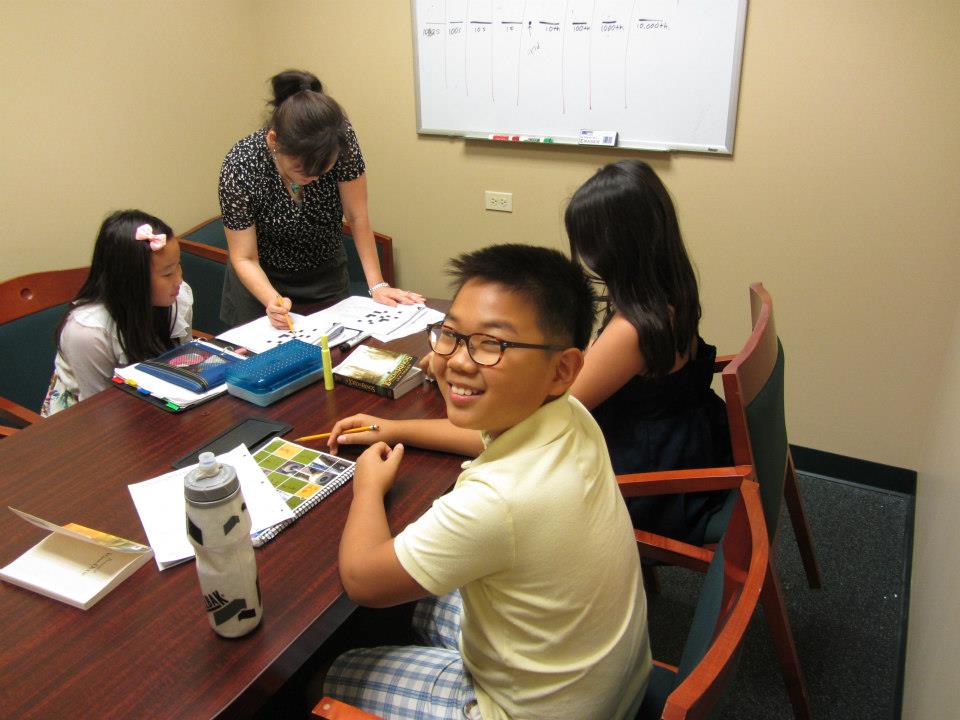|
Turkey Day has come and gone, holiday music is becoming inescapable, the streets twinkle with lights… it must be time to start thinking about New Year's resolutions! Whether you’re trying to build lifelong habits, learn new study skills for school, or are just interested in general self-improvement, we’d like to give your motivation a boost by equipping you with techniques to choose realistic goals and feel the sense of accomplishment that comes with actually achieving them.  Before you create a wishlist of every lofty resolution that comes to mind, remember that not all goals are created equal. S.M.A.R.T. goals help us work smarter, not harder! The concept of a S.M.A.R.T. goal was introduced by George Doran, Arthur Miller, and James Cunningham in the 1981 article, “There’s a S.M.A.R.T. way to write management goals and objectives.” A handy acronym to keep in mind when creating goals, S.M.A.R.T. stands for Specific, Measurable, Attainable, Realistic, and Time-bound. Have you ever made a big New Year's resolution such as, “I will eat healthy,” or “I will be more organized?” Were you able to stick to that broad, vague goal? Probably not! Defining specific and measurable goals allows you to determine a realistic scope and timeframe for your goal, making that goal more possible to understand, pursue, and achieve. Consider these two examples of S.M.A.R.T. goals:
Everything goes back to your “why.” When setting a goal, you should understand why you want to set it. What behaviors, patterns, or assumptions do you want to change? Why is this change important to you, and why is it important right now? Once you understand the “why” that is driving your goal-setting, you will be able to better determine the most productive ways to go about achieving your aims, helping you clarify your S.M.A.R.T. goal. Once you know your “why” and have created your S.M.A.R.T. goal, it’s time to enact your plan. While S.M.A.R.T. goals can help you define and focus your goals, the journey of how to achieve them is up to you! Remember that “slow and steady” wins the race, as the saying goes. When working toward a goal, it’s important to take the long view and to work at a level that you can keep up over time. If you start in a “sprint,” attempting to accomplish everything at once, you will most likely fail. Instead of setting yourself up for failure and discouragement, generate some momentum for yourself by celebrating small successes and reinforcing small habits. Need some tools to stick with it? According to Atomic Habits: An Easy & Proven Way to Build Good Habits & Break Bad Ones by James Clear, we can leverage the Four Laws of Behavior Change to build better habits. According to this theory, you have more of a chance of building a new habit if the habit is obvious, attractive, easy, and satisfying. Think of people who lay out their workout clothes before going to bed, or even sleep in them so that there is no excuse not to exercise in the morning! Consider those who choose a type of exercise that they genuinely enjoy, instead of trying and failing to commit to an activity that they don’t like doing. Using these tricks, your new habit will eventually become automatic. Just think, soon, instead of dragging yourself to the gym, it will feel strange not to go to the gym. You may even miss it! Your new habit will integrate into your life, enabling you to
maintain and achieve your S.M.A.R.T. goal. What are your New Year's resolutions? Can any of them be made into S.M.A.R.T. goals? As the year winds down, now is the ideal time to start brainstorming some S.M.A.R.T. goals for yourself. New Year's Resolutions don’t have to be all about dieting and exercising; remember that academic goals can be productive resolutions too. Along the journey, remember to celebrate your successes, both big and small. As Clear suggests in Atomic Habits, “All big things come from small beginnings. The seed of every habit is a single, tiny decision.” Here’s to a proactive and productive New Year!
2 Comments
Tutoring may be more important than ever as a recent study has confirmed what many educators suspected to be true: American student test scores have decreased over the past two pandemic-defined years. In “Those Grade-School Test Scores Are a Really Bad Sign” for Slate.com, Shirin Ali references math and reading scores reported by The National Assessment of Educational Progress (NAEP). These scores revealed notable declines in math and reading skills among fourth and eighth graders across America. In fact, every single state showed “straight declines or no significant changes.” A bad “report card,” indeed. Given that test scores may have a connection with high school completion, college success, and adult livelihood, the stakes are high as experts discuss how to recover from pandemic-era learning loss. While former NPR education reporter and author Anya Kamenetz is not surprised that student test scores have decreased over the past two years, she sees this decline as an alarming cause for concern. In an interview with Ali, Kamenetz offers her thoughts on the meaning of these scores, possible remedies, and key takeaways. 1. It is not about the score; it is about the implications Emphasizing the far-reaching significance of declining test scores, Kamenetz points out that there is little historical precedent to support a shift in education from the current reality to the benchmarks educators want students to achieve. Meanwhile, more students are foregoing college, further building on a 20 percent drop in community college admissions since the beginning of the pandemic. While the federal government has pumped money into education, schools are not necessarily using the money “in research-affirmed ways.” While Kamenetz agrees that increased funding is needed, she also stresses that, ultimately, learning recovery takes time.  2. High-dose tutoring is one of the solutions. High-dose tutoring is one of the research-backed solutions that combats learning loss. High-dose tutoring means tutoring a few times a week with specially trained teachers, either in one-to-one or small group settings. Kamenetz suggests that many students can benefit from tutoring to address learning gaps, noting that pandemic-related learning loss is somewhat different from other kinds of academic difficulties. Despite the potential of tutoring as an effective remedy for learning loss, parent buy-in presents obstacles. A survey by Brookings Institution found that less than 50% of parents reported that their child’s school was offering tutoring and/or summer school. Moreover, just over 25% of parents indicated interest in tutoring. Describing a mutual “communication problem” between schools and parents, Kamenetz notes that schools are not effectively communicating the urgency of the need for extra learning time. Parents are not understanding that their children are behind because priorities have changed. Instead of familiarizing themselves with grade-level benchmarks, parents are focused on social-emotional aspects of school in the wake of the pandemic. In addition to this necessary emphasis on wellbeing, academic gaps need to be addressed in order to ensure student success. 3. Taking action now can pave the path for success!
As the new reality of low test scores and learning loss continues to set in, what can parents do? Kamenetz suggests starting a conversation with your student's teacher to pinpoint where extra help is needed. High-dose tutoring sessions, after-school programs, summer school, and extended school–day and school–year initiatives are all possible solutions. At iLearn Academy, we believe in a personalized approach to tutoring that helps students achieve academic success. With ten years of experience providing quality tutoring and measurable results, we are ready to help students fill in academic gaps and recover from learning loss.
|
Categories |
We make a personal commitment to ensure each student is well-prepared for the academic school year.
Dedicated to helping your student succeed.
©
iLearn Academy 2019








 RSS Feed
RSS Feed
